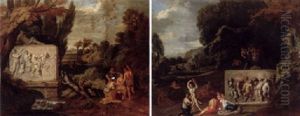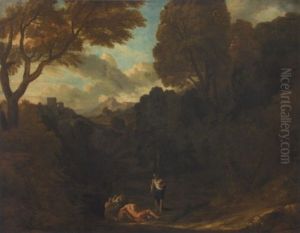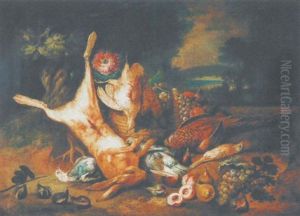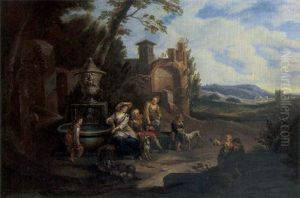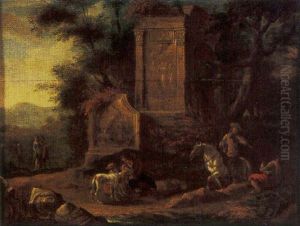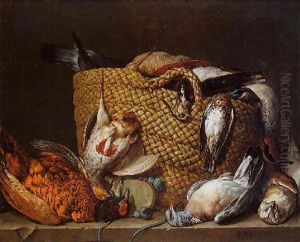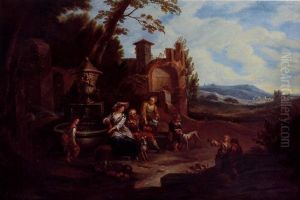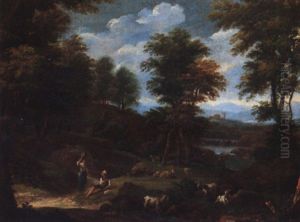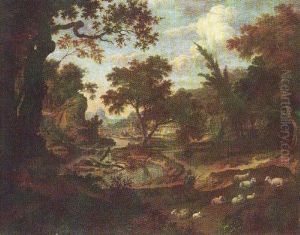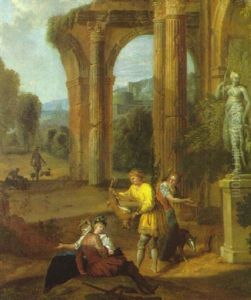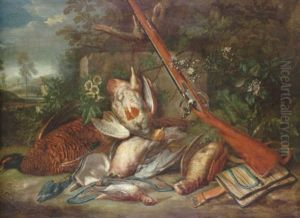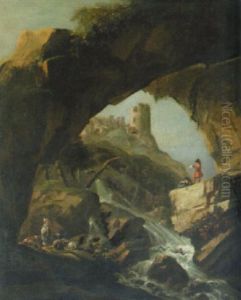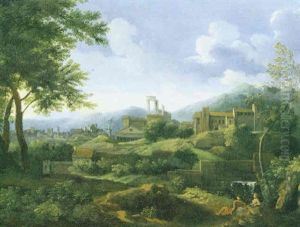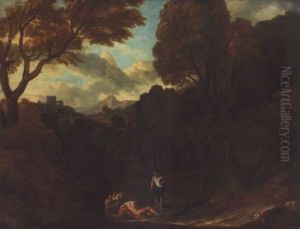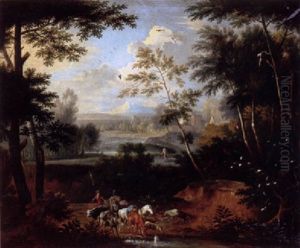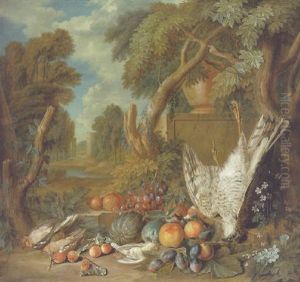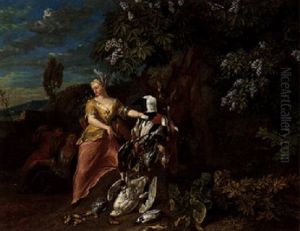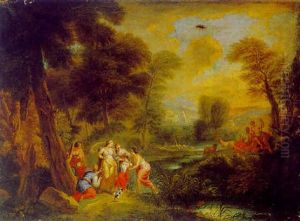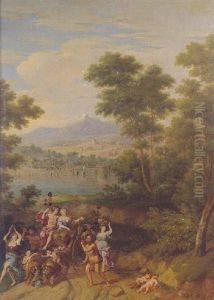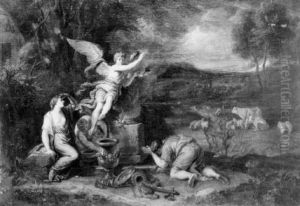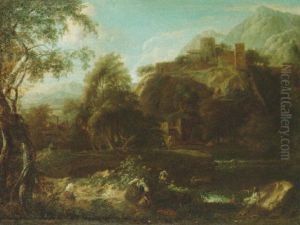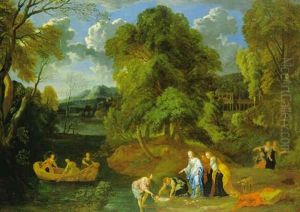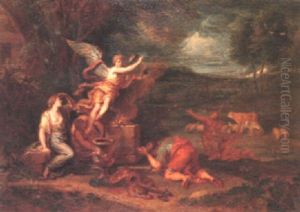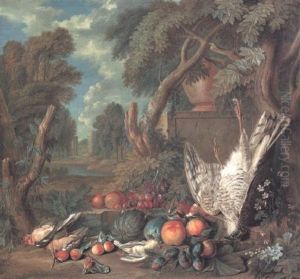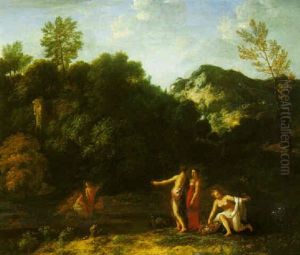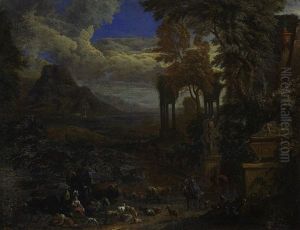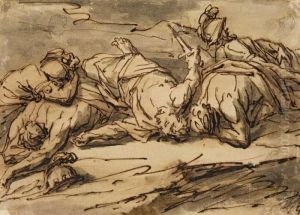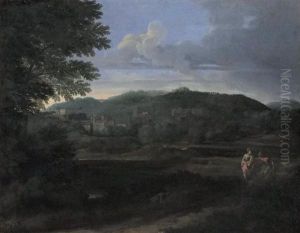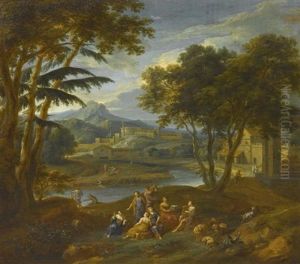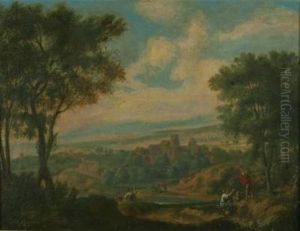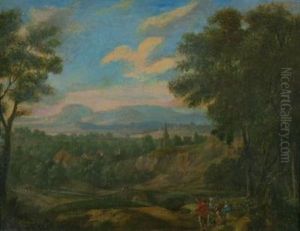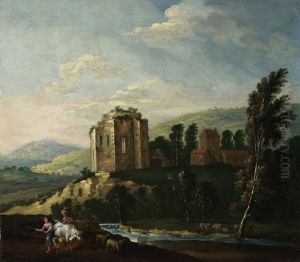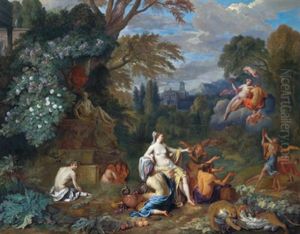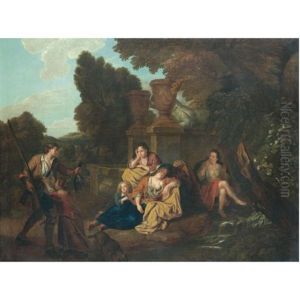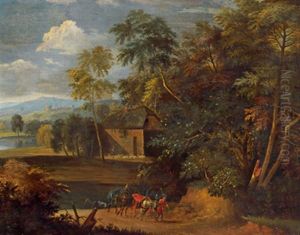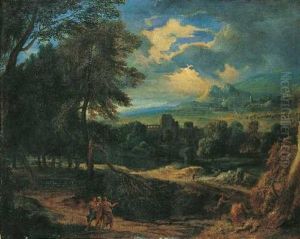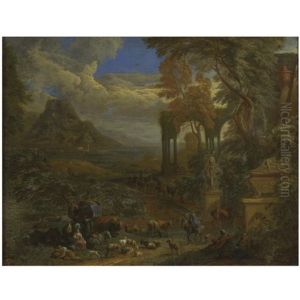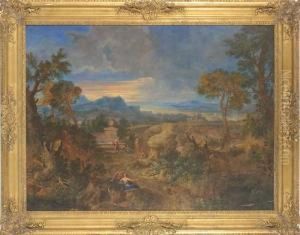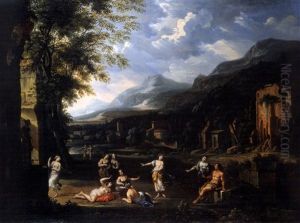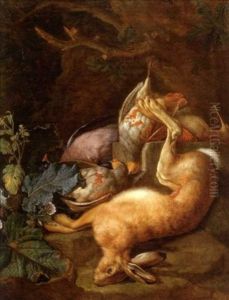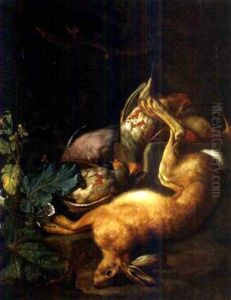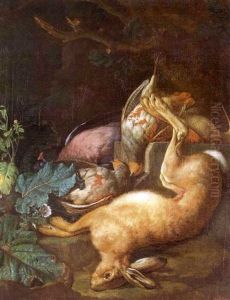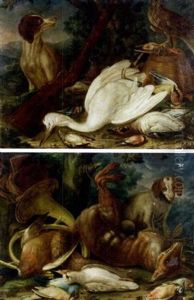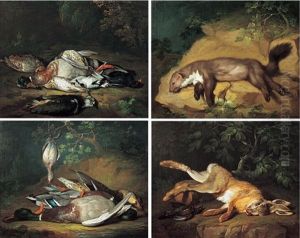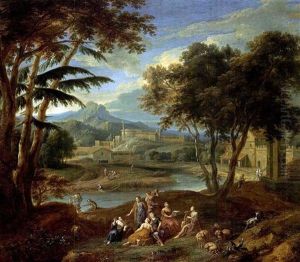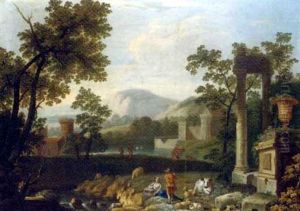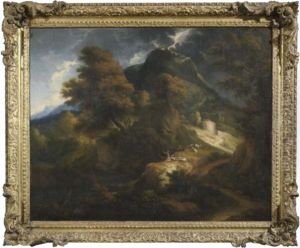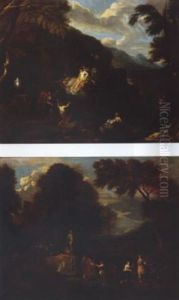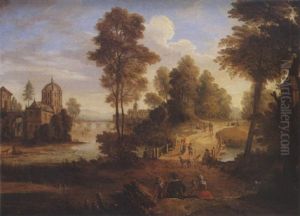Pieter Rysbraeck Paintings
Pieter Rysbraeck was a Flemish painter, draughtsman, and engraver known for his landscape and architectural works. Born in 1685 in Antwerp, Belgium, Rysbraeck was part of a region that had a rich tradition of art dating back to the Flemish Primitives and had evolved through the Baroque period with figures like Peter Paul Rubens.
Rysbraeck's early life and training are not well-documented, but it is believed that he was influenced by the works of Flemish and Dutch masters of landscape and architectural painting. He was active during a period when art was transitioning from the grandeur of the Baroque to the more delicate and ornamental Rococo style, although his own work remained more aligned with the naturalistic tendencies of the Baroque.
In his career, Rysbraeck produced numerous etchings and engravings, some of which depict the landscapes and cityscapes of his homeland. His attention to detail and ability to capture the quality of light were notable. These works served not only as art but also as historical records of the architecture and urban planning of his time. This was particularly valuable in an era when many cities were undergoing significant changes.
Rysbraeck's works can be characterized by their detailed representation of architectural elements, often imbued with a sense of realism. He was skilled at using both the brush and the engraver's tools, which allowed him to render textures and materials with precision.
Regrettably, Rysbraeck's work did not gain the same level of fame as some of his contemporaries, and as a result, his paintings and prints did not always receive the same historical attention. Nevertheless, his contributions to the Flemish tradition of landscape and architectural art are recognized among art historians and collectors.
Pieter Rysbraeck passed away in 1748. While the exact circumstances of his death are unclear, his legacy lives on through his artworks that continue to be appreciated for their historical value and craftsmanship. Due to the scarcity of records, there is limited information on his personal life, and much of what is known about Rysbraeck's art comes from the analysis of his surviving works and the context in which he created them.
